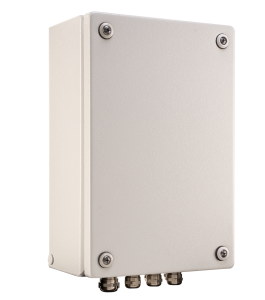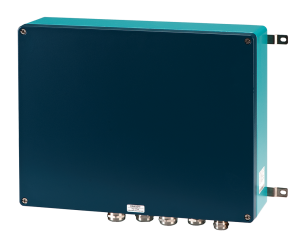CIP402-44
Obstruction Light System Controller
Key features
- Controller for systems with Orga Aeronautical Obstruction Lights, Helihoist Lights, Search and Rescue Lights, ID Lights and Visibility Sensors
- System status monitoring and fail interface
- Manual control override of connected lights
- No (internal) wires
- Integrated Over Voltage Protection
- Communication via Modbus over TCP/IP
- Ethernet communication, with Cyber Security elements implemented
- Base module with Input & Output (I/O) for dedicated functions
- Cost-efficient housing design, meeting C3 corrosion robustness
- Simple cable connection for easy installation
- Supplied with EMC cable glands and blind plugs
- No maintenance during service life
- Two-year warranty
Standards/Certification
- ICAO Annex 14, volume l; International standards and recommended practices: Aerodrome design and operations, 8th Edition, 2018, chapter 6 (for systems incl. CIP402 controllers and obstruction lights)
- United States Federal Aviation Administration AC 70/7460-1L; Obstruction Marking and Lighting, 2018 (for systems incl. CIP402 controllers and obstruction lights)
- Various national approvals (for systems incl. CIP402 controllers and obstruction lights)
Physical characteristics
- Dimensions: See drawing
- Weight: 7 Kg
- Design degree of protection:
IP65 - Operating temperature range:
-40° C to +55° C - Shipping information:
351x515x123 Cm; 8 kg
Performance characteristics
- Controls up to ninety Orga aeronautical obstruction lights
- Ethernet interface for remote system monitoring and control
- Ethernet connection CAT6 with RJ45
- connection compatible with standard IEEE 802.3u
- Overall system fail contact
- I/O interface for control using 24Vdc input
- Additional I/O module for control
- Signals optional main–standby light
Electrical characteristics
- Operating voltage: See table
- Power consumption: 4 W
- Overvoltage protection: Class III according to IEC61643-1

